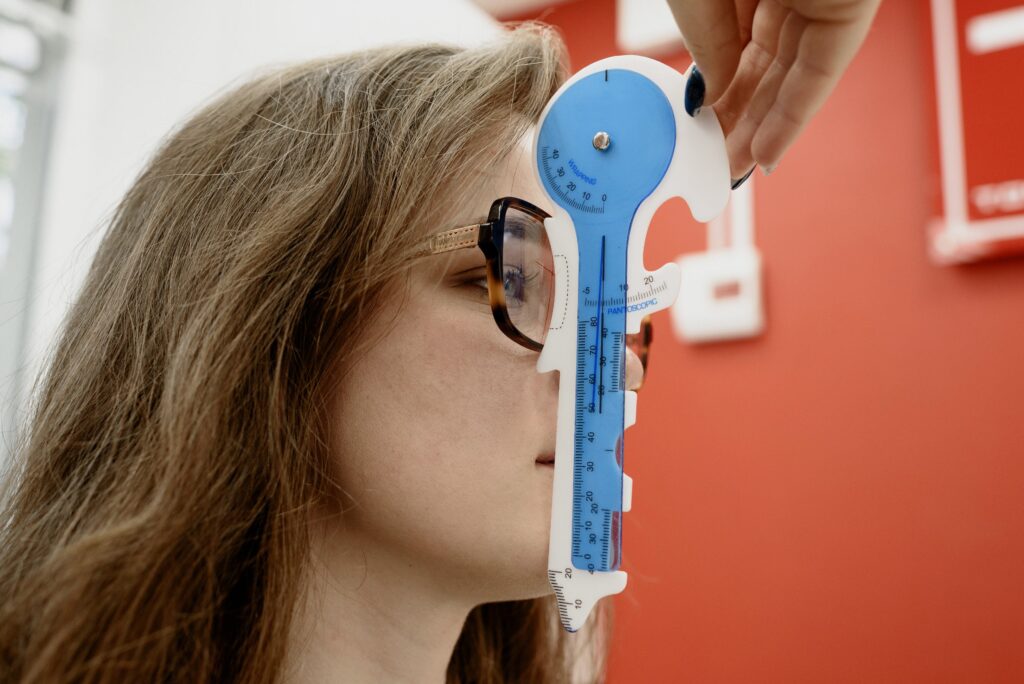A guide to choosing the right frame size for your glasses
Perhaps you have experienced an ache behind your ears that mysteriously disappears when you remove your glasses. Do you know someone that wears glasses and has small indents on the sides of their noses?
Glasses that are not properly fitted are often causing both of these problems. They should distribute pressure equally throughout the nose, head width, and ears, as well as complementing your face type. So, how do you choose a frame that is right for you? Learn how to measure a frame, what types of faces are suited to which frames, and why those little numbers on your glasses are important?
What is the best way to fit your face to your glasses frames?
As we have established, if your glasses are fitting properly, you shouldn’t get small aches and marks. There are other things to consider when selecting the proper pair of glasses:
-
To ensure that your glasses fit properly, you should make sure that the bridge design and position are correct. We will explain how to measure the width of the bridge later in this article.
-
There should be no difference in width between your frames and the width of your face at the temples
-
In general, you should not wear frames that are higher than the line between your eyebrows
-
Frames should not rest on your cheeks, as they will rub against your skin and irritate it
Online shopping for the perfect fit
You may feel a bit uneasy about shopping online for glasses without a store attendant to assist you, or the ability to try on each pair and see how they look, but it is quite straightforward.
What you need to do in order to purchase a frame with the same measurements as your existing one
On most glasses frames, there is information printed about various frame measurements. Such information can be found on the inside of the arms, or it can be found on the back of the bridge, or it could be located on the inside of the nosepiece or the bridge of the glasses.
It is always necessary to search for first numbers that fall into a sequence of three, for example 53-20-140. In this article, these numbers are represented as ‘a-b-c’, just to make them easier to understand. It is sometimes possible to distinguish between numbers ‘a’ and ‘b’ by using a small rectangle shape.
It is the size of the lens at its widest point measured in millimetres that constitutes the lens diameter, which is indicated on the left side of the rectangle, or ‘a’. A bridge width, or ‘b’ in our sequence, is indicated on the right of the rectangle. A well-fitting pair of glasses is highly dependent on the distance between the two lenses – the part that fits on your nose. As mentioned earlier, this number is important. Finally, ‘c’ describes how long the arms on your glasses are. To achieve the same fit and feel as your new glasses, simply match measurements ‘a’ and ‘b’.
This information should be readily available on most online retailers’ websites. On our website, you can find measurements such as bridge width, lens diameter, lens height, and arm length for all of the prescription glasses and sunglasses models we have featured online.
Getting the perfect fit for your frames by measuring yourself
The only thing you need for measuring yourself is a ruler if you are shopping online for glasses.
-
Place a ruler in line with your temples and stand in front of a mirror
-
Take an inch-by-inch measurement between your temples
-
The measurement value should be multiplied by 254 in order to convert from inches to millimeters.
As soon as you have measured your face, determine the frame size of the glasses you want. As shown above, this is the sum of both the lens width (or ‘a’ + ‘a’) and the bridge width (or ‘b’ in our example). Depending on your measurement, your frame size may be up to 3mm smaller or larger. When choosing a frame size, choose one that matches your face’s length.
How do I determine the right frame size for my face?
Ideally, frames should be no wider than 129 millimeters for small or narrow faces
There is a range of frame widths that are suitable for medium sized faces between 130 mm and 139 mm
If you have a wide face, a frame width exceeding 139 mm will be ideal for you
Remember this
To ensure that you can return glasses that do not feel right, it is important to verify that the retailer you are shopping at has a return policy. If the glasses are not damaged and you have the receipt, you may be able to return them within 60 days of the purchase date. The measurement may vary depending on the model, so it might take some trial and error.
It is possible to create a pair of glasses that are perfectly suited to your face structure by making some minor adjustments, but which you will hardly notice at all.
















